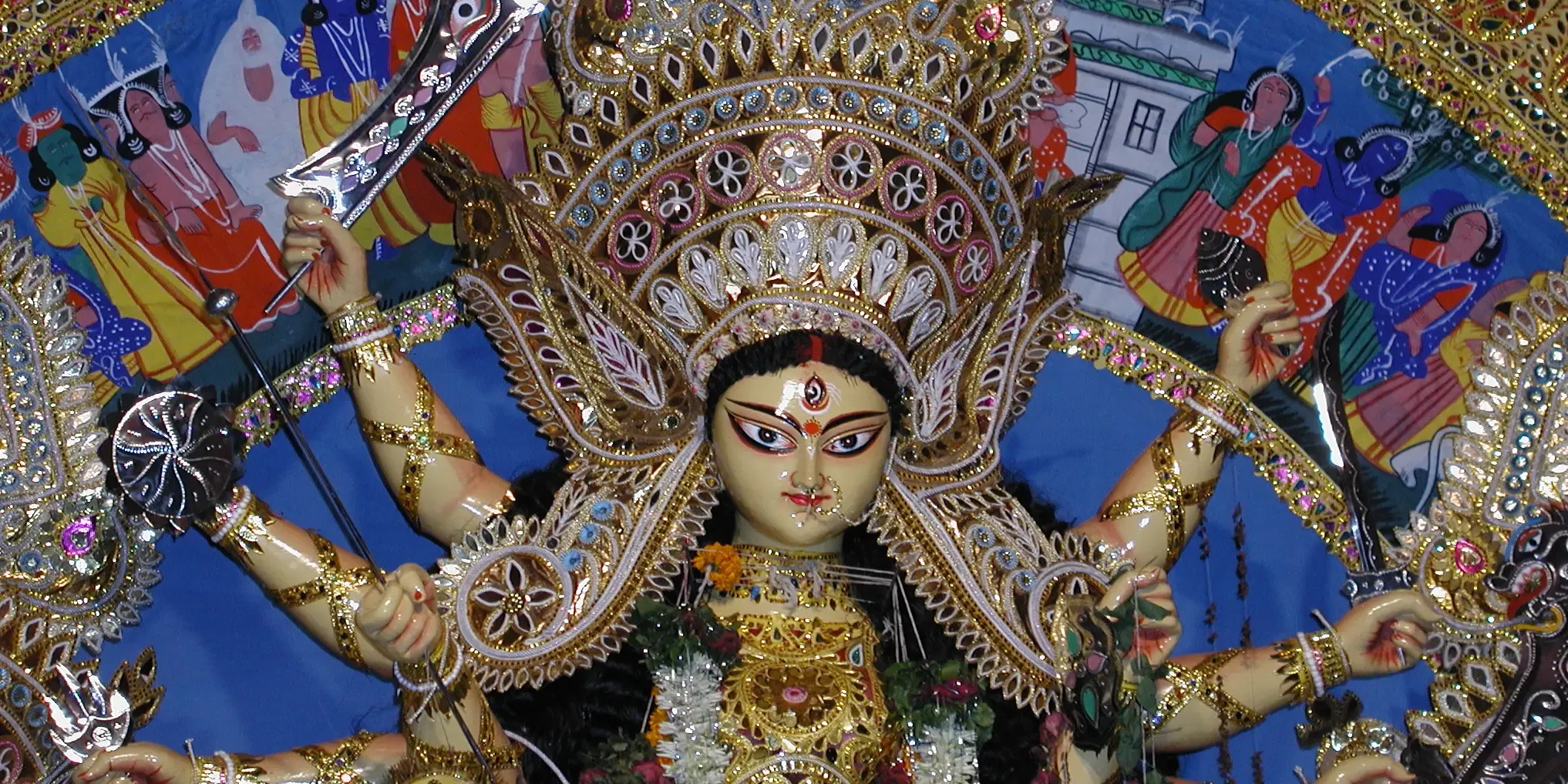Durga Puja

Durga Puja is the most important and grandest festival for Bengalis. Celebrated over five days, it symbolizes the triumph of good over evil. Maa Durga, revered as the daughter of Bengalis, is believed to descend from her heavenly abode (Kailash) to visit her earthly home for five days, accompanied by her children: Kartik (protector), Ganesh (initiator of the puja), Saraswati (knowledge), and Lakshmi (provider), representing the goddess’s complete manifestation.
The festivities begin with Mahalaya, marked by the chanting of “Roopam dehi, dhanam dehi, yasho dehi” (give me beauty, wealth, and fame) throughout Bengal. The rhythmic beats of the dhak (drum) build anticipation for the upcoming celebrations.
Traditionally, Durga Puja coincided with the end of the monsoon, providing respite for farmers from their fields. The pleasant weather, blue skies, and fluffy white clouds created an idyllic backdrop for the festival. However, this agrarian connection has diminished for most city dwellers, as October often brings either scorching heat (the “October Summer”) or untimely rain.
Today, Durga Puja is a blend of tradition and commercialism. Pre-Puja sales and exhibitions showcase the latest fashion trends, while newspapers and magazines publish special issues featuring budding and established authors. Music companies release new albums, and train tickets to tourist destinations are booked months in advance. Puja pandals have become elaborate showcases of creativity, with intense competition among organizers for the best idol and decorations.
While living in San Francisco, I experienced Durga Puja celebrations adapted to the local community. Weekend pujas were organized to accommodate busy work schedules, often held on two consecutive weekends for maximum participation. In Paris, the festival aligned with the lunar calendar (tithi), making attendance more challenging.
A popular joke among Bengalis is that any gathering of two Bengalis will inevitably lead to discussions about three Durga Pujas! In Bombay, the number of pujas exceeds 22, demonstrating the city’s vibrant Bengali community spirit. This year, I had the opportunity to celebrate with my maternal uncle’s family and experience a local puja firsthand.
The midday puja ritual involves offering pushpanjali (floral tributes) to the goddess, followed by the distribution of prasad (holy food). The traditional prasad includes khichuri (rice and lentil dish), baigan bhaja (aubergine fry), labra (mixed vegetable dish), chutney, and payesh (rice pudding). However, the large crowds and empty stomachs required for the ritual often led to long queues for prasad.
Evenings are filled with cultural programs and a variety of food stalls. Many families take advantage of the occasion to indulge in their favorite snacks and sweets, often dubbing it “Pet Puja” (stomach worship). The festive atmosphere attracts crowds, leading to traffic congestion and the occasional lost child. New clothes and shoes are essential for the occasion, as everyone strives to look their best.
This year, we joined a bus tour to visit different puja pandals across Bombay. While the scheduled midnight start time was delayed, we eventually embarked on our journey. Unfortunately, heavy rain transformed Shivaji Park into a muddy field, forcing us to navigate through ankle-deep water. Despite the challenges, the night was memorable, if exhausting.
About the Author

Santanu
A nature lover, runner, travel enthusiast, and occasional baker. He dives into web development and cloud technologies, always exploring and building with curiosity.
View all posts →

